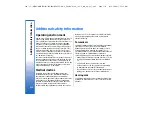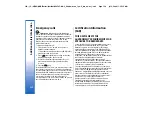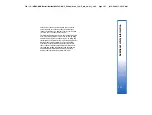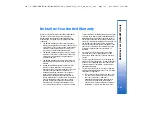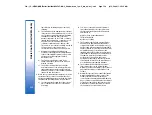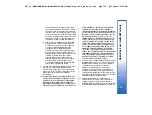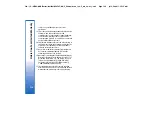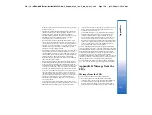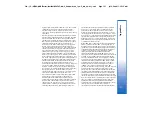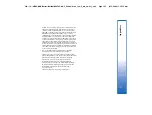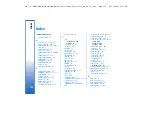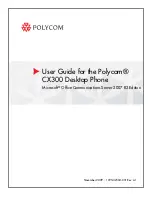
Emergency calls
Important:
Wireless phones, including this
device, operate using radio signals, wireless networks,
landline networks, and user-programmed functions.
Because of this, connections in all conditions cannot be
guaranteed. You should never rely solely on any
wireless device for essential communications like
medical emergencies.
To make an emergency call:
1. If the device is not on, switch it on. Check for
adequate signal strength.
Some networks may require that a valid SIM card is
properly inserted in the device.
2. Press
as many times as needed to clear the
display and ready the device for calls.
3. Key in the official emergency number for your
present location. Emergency numbers vary by
location.
4. Press the
key.
If certain features are in use, you may first need to turn
those features off before you can make an emergency
call. Consult this guide or your service provider for more
information. When making an emergency call, give all
the necessary information as accurately as possible.
Your wireless device may be the only means of
communication at the scene of an accident. Do not end
the call until given permission to do so.
Certification Information
(SAR)
THIS DEVICE MEETS THE
GOVERNMENT'S REQUIREMENTS FOR
EXPOSURE TO RADIO WAVES.
Your mobile device is a radio transmitter and receiver.
It is designed and manufactured not to exceed the
limits for exposure to radio frequency (RF) energy
adopted by the governments of the USA through the
Federal Communications Commission (FCC) and Canada
through Industry Canada (IC). These limits establish
permitted levels of RF energy for the general
population. The guidelines are based on standards that
were developed by independent scientific
organizations through periodic and thorough
evaluation of scientific studies. The standards include a
substantial safety margin designed to assure the safety
of all persons, regardless of age and health.
The exposure guidelines for mobile devices employ a
unit of measurement known as the Specific Absorption
Rate or SAR. The SAR limit adopted by the USA and
Canada is 1.6 watts/kilogram (W/kg) averaged over one
gram of tissue. The limit incorporates a substantial
margin of safety to give additional protection for the
public and to account for any variations in
measurements. Tests for SAR are conducted using
standard operating positions with the device
transmitting at its highest certified power level in all
tested frequency bands. The actual SAR level of an
operating device can be well below the maximum
120
Additional safety information
file:///C:/USERS/MODEServer/tkoikkal/864507/RA-2_Erin/en/issue_1/ra-2_erin_en-us_1.xml
Page 120
Jul 2, 2004 11:32:12 AM
file:///C:/USERS/MODEServer/tkoikkal/864507/RA-2_Erin/en/issue_1/ra-2_erin_en-us_1.xml
Page 120
Jul 2, 2004 11:32:12 AM













